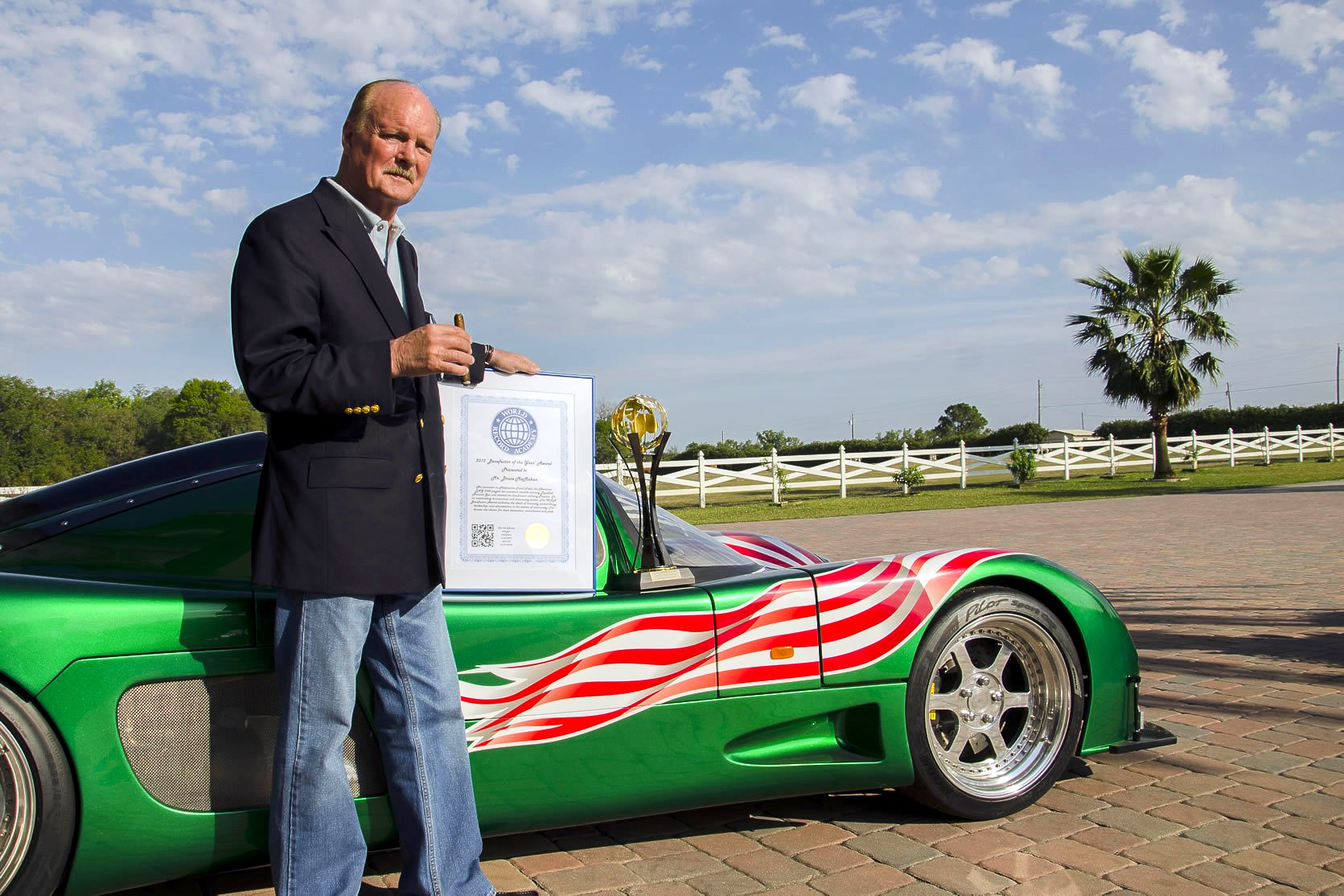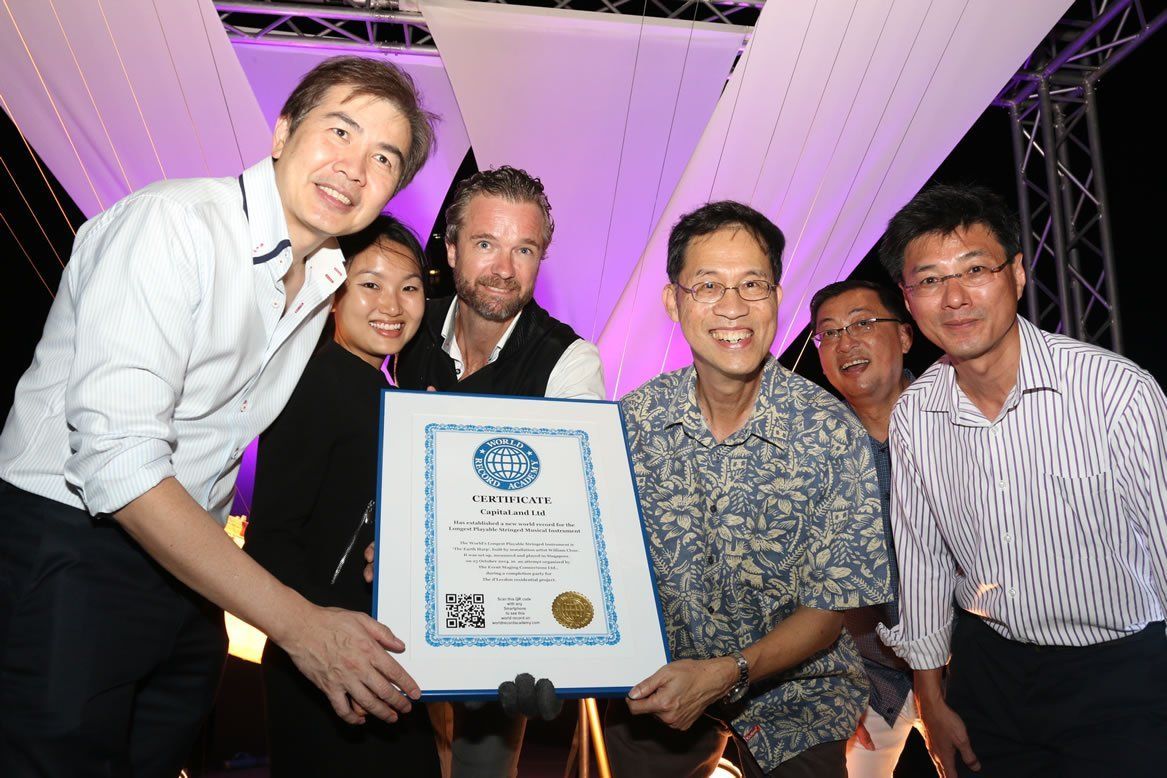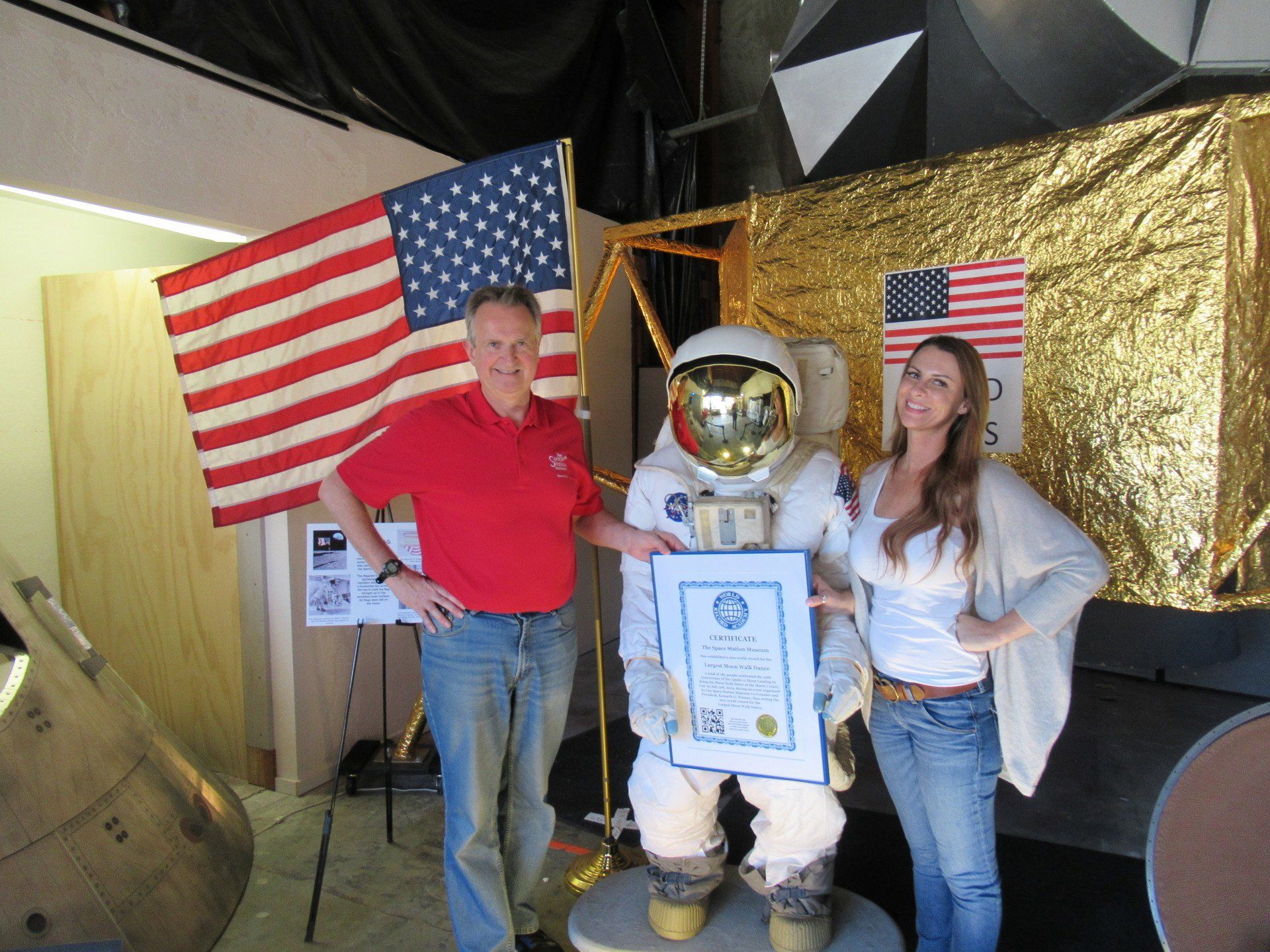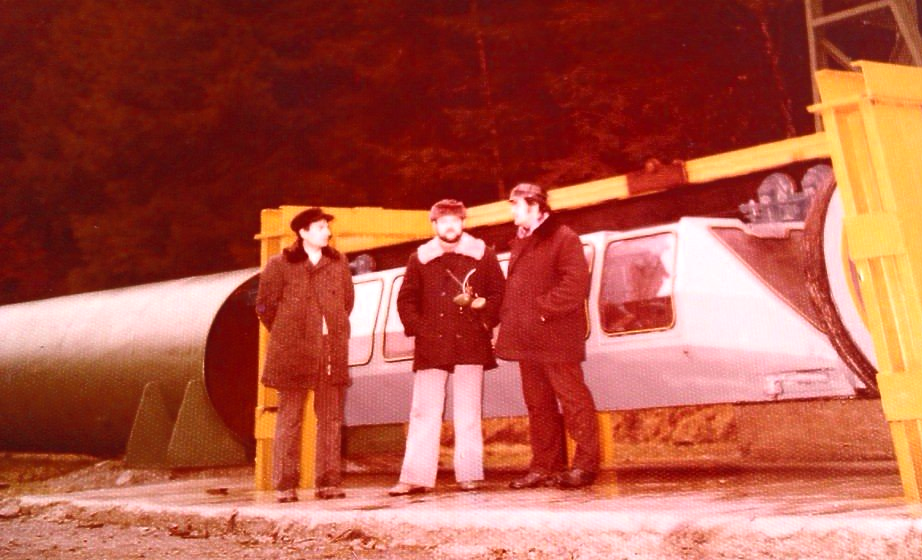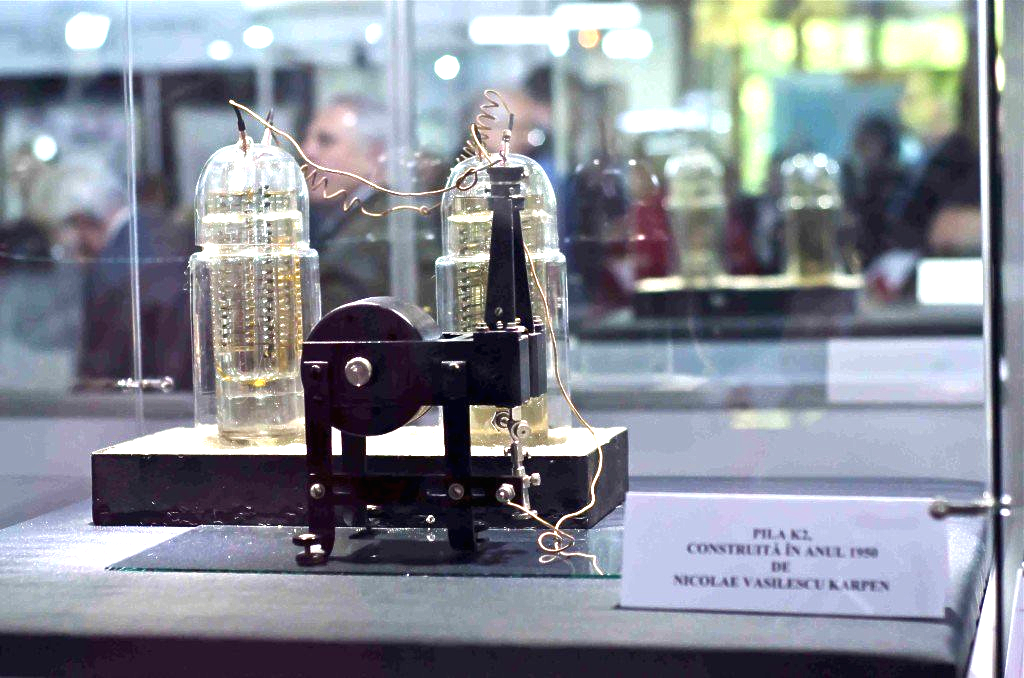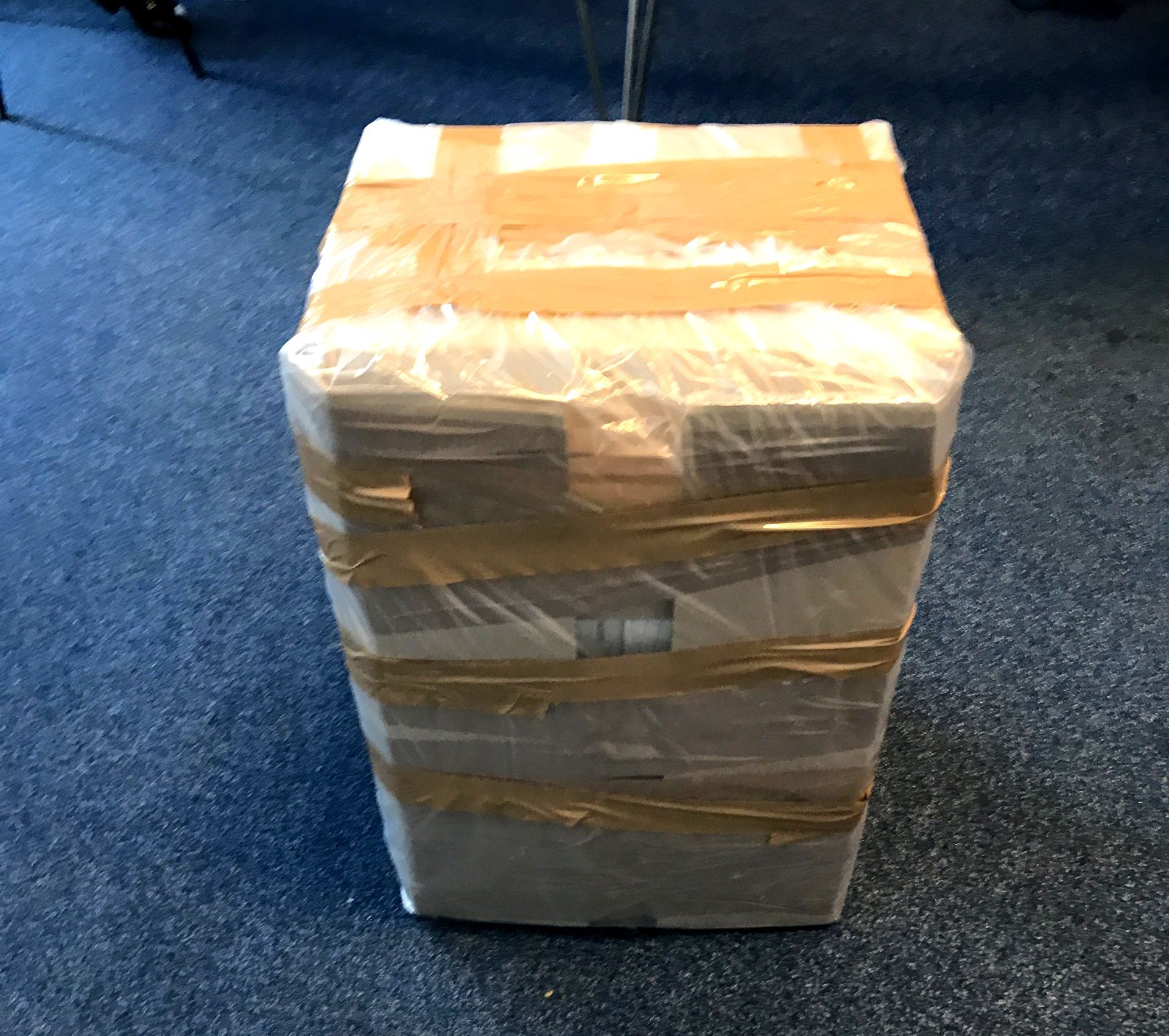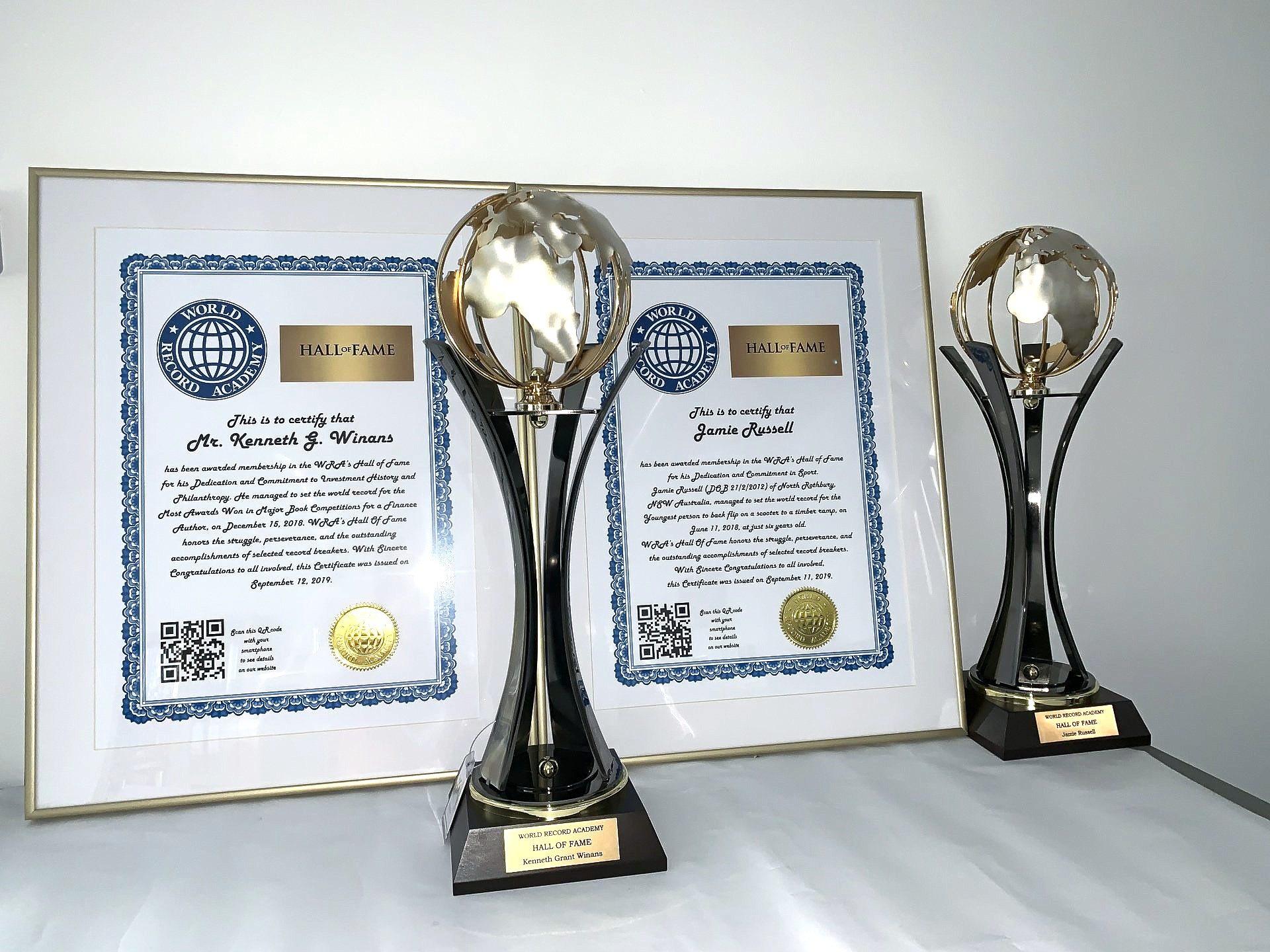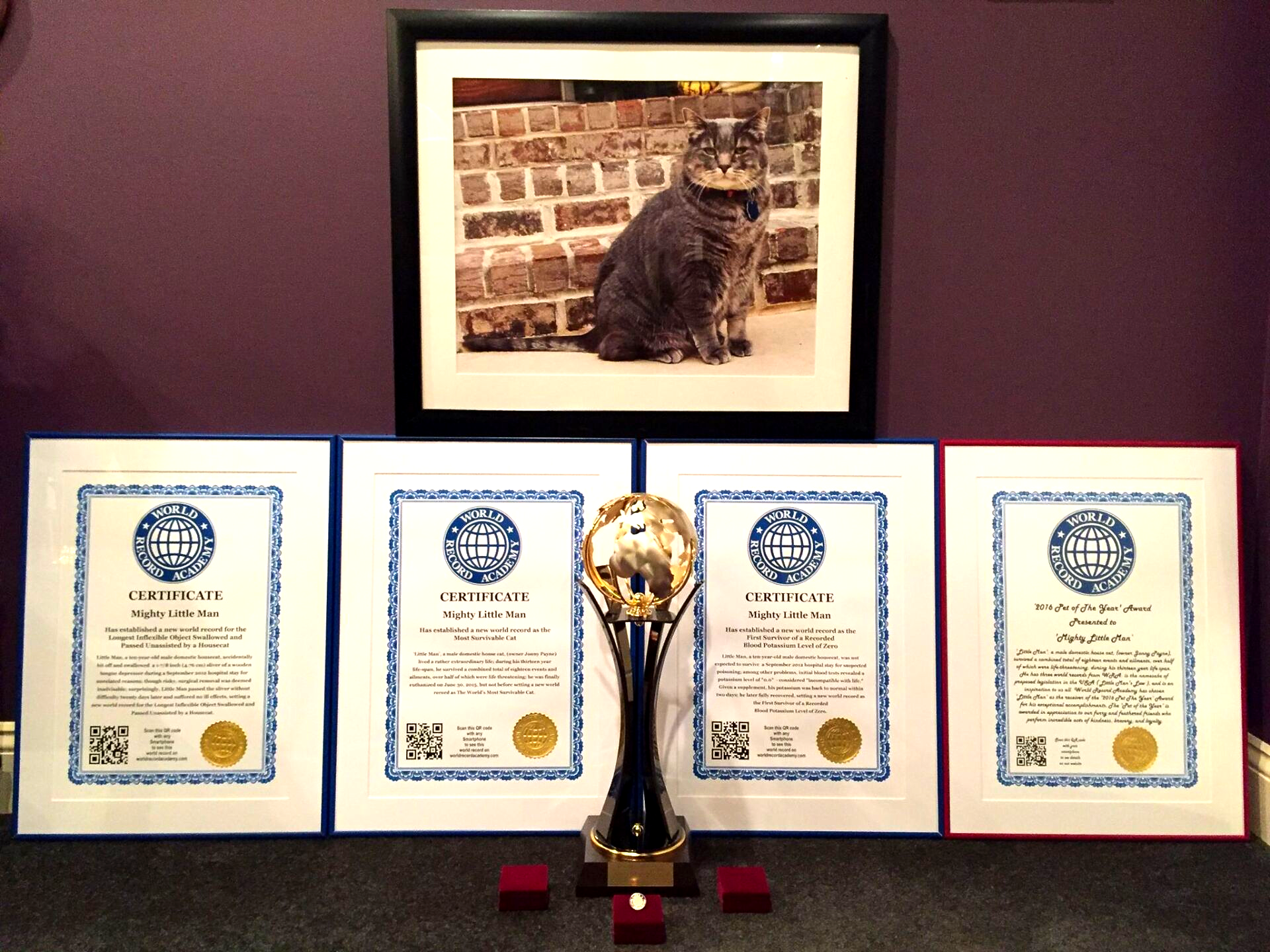World's Largest Polymer 3D Printer, world record in Orono, Maine, United States
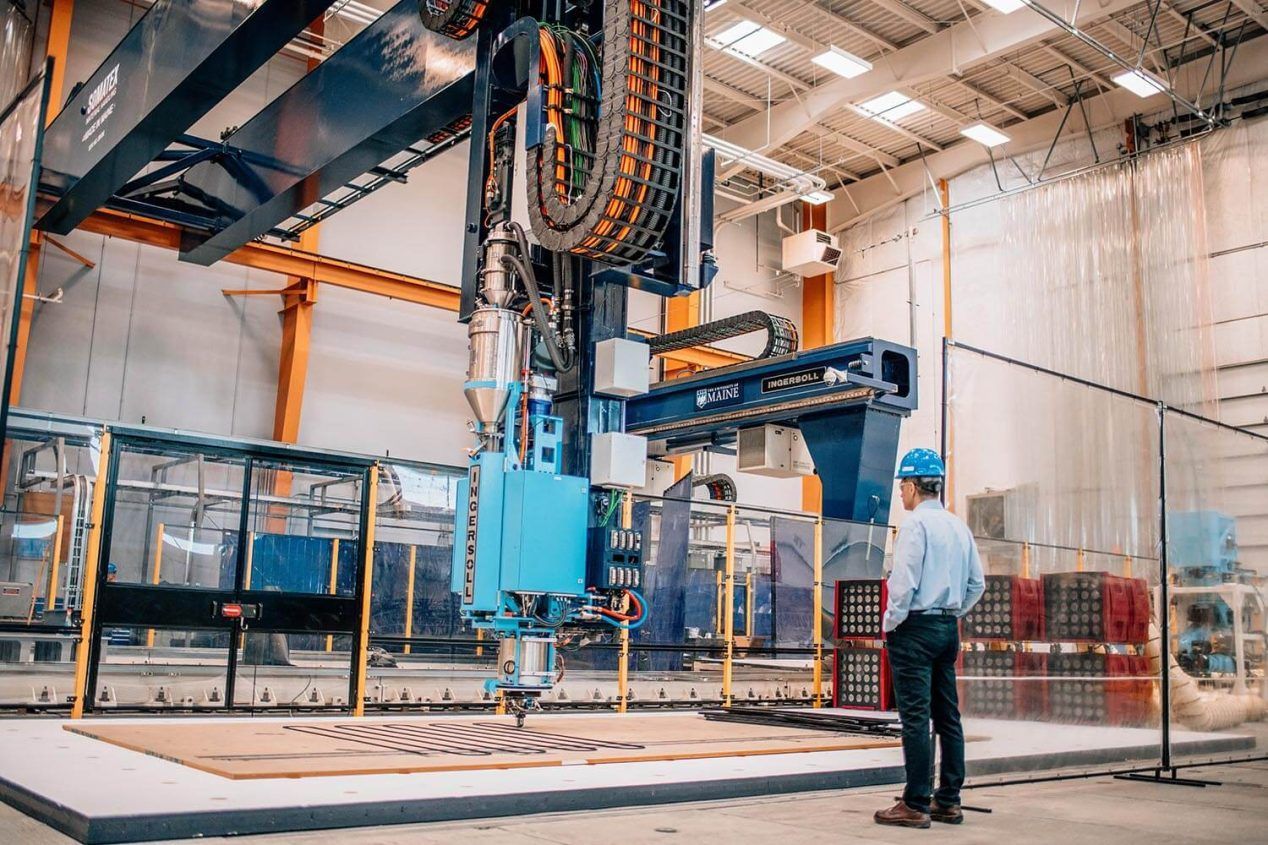
Orono, Maine, United States--Surpassing its own 2019 World Record for the largest polymer 3D printer,
University of Maine unveiled a next-generation printer that is four times larger than its predecessor; the new printer, dubbed Factory of the Future 1.0 (FoF 1.0), is designed to print objects as large as 96 feet long by 32 feet wide by 18 feet high, and can print up to 500 pounds per hour, setting the new world record for the
World's Largest Polymer 3D Printer, according to the WORLD RECORD ACADEMY.
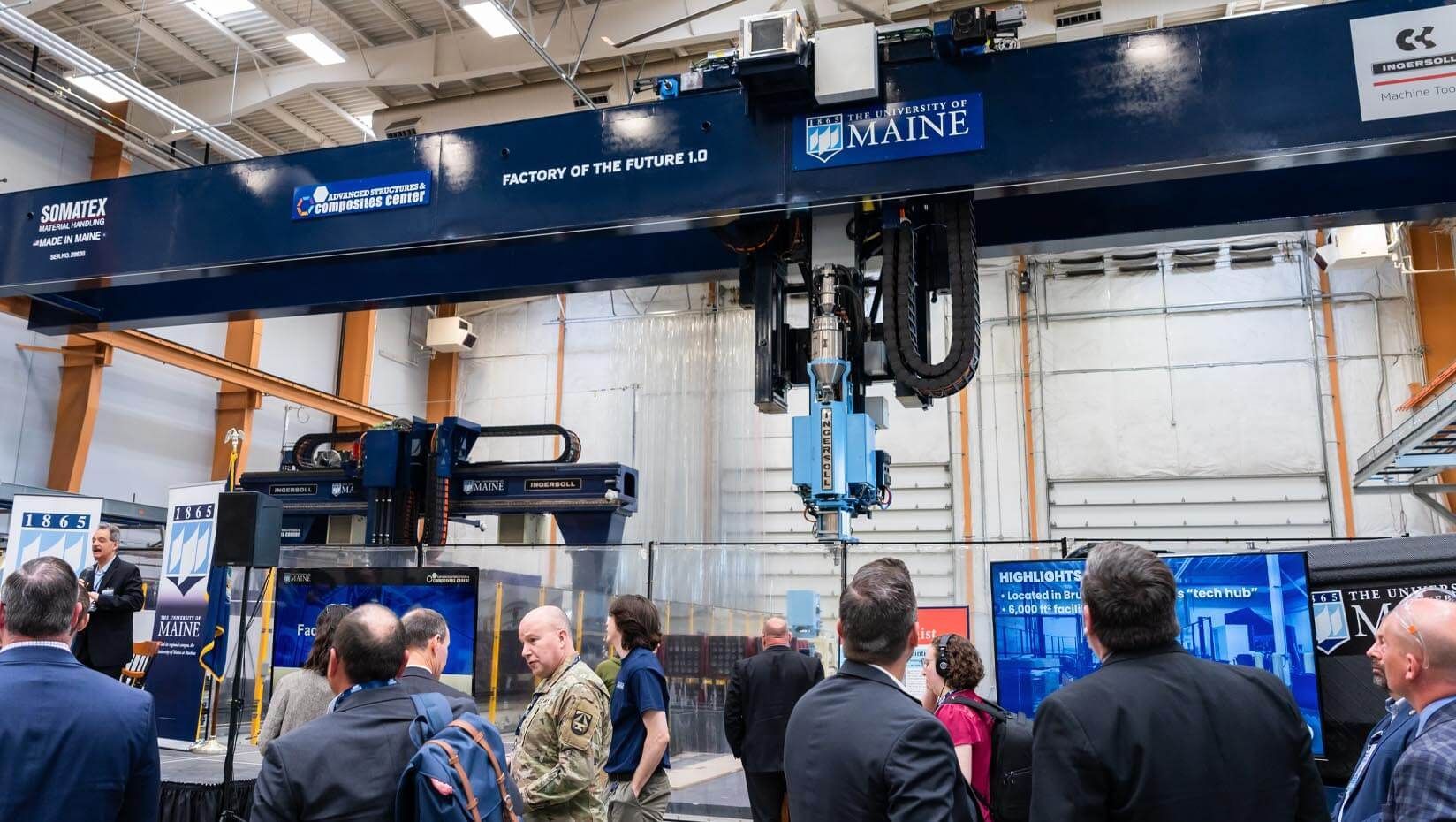
"Surpassing its own 2019 Guinness World Record for the largest polymer 3D printer, UMaine unveiled a next-generation printer that is four times larger than its predecessor to catalyze the future of sustainable manufacturing in a number of industries," the University of Maine says.
"The new printer, dubbed Factory of the Future 1.0 (FoF 1.0), was unveiled at the Advanced Structures and Composites Center (ASCC) to an audience that included representatives from the U.S. Department of Defense, U.S. Department of Energy, the Maine State Housing Authority, industry partners and other stakeholders who plan to utilize this technology.
"The thermoplastic polymer printer is designed to print objects as large as 96 feet long by 32 feet wide by 18 feet high, and can print up to 500 pounds per hour. It offers new opportunities for eco-friendly and cost-effective manufacturing for numerous industries, including national security, affordable housing, bridge construction, ocean and wind energy technologies and maritime vessel fabrication.
"The design and fabrication of this world-first printer and hybrid manufacturing system was made possible with support from the Office of the Secretary of Defense through the U.S. Army Corps of Engineers."

"FoF 1.0 isn’t merely a large-scale printer; it dynamically switches between various processes such as large-scale additive manufacturing, subtractive manufacturing, continuous tape layup and robotic arm operations.
"Access to it and MasterPrint, the ASCC’s first world-record breaking 3D printer, will streamline manufacturing innovation research at the center. The two large printers can collaborate by sharing the same end-effectors or by working on the same part.

“UMaine and the Advanced Structures and Composites Center possess the innovation, capacity, and workforce to support the future needs of the Department of Defense in advanced manufacturing,” said U.S. Sen. Susan Collins.
“This is a great day for our University, our State, and our Nation. I congratulate President Joan Ferrini-Mundy and Dr. Habib Dagher on another important milestone and look forward to witnessing this Center’s continued innovation that is invaluable to our national security.”
“FoF 1.0 opens up new research frontiers to integrate these collaborative robotics operations at a very large scale with new sensors, high-performance computing and artificial intelligence to create born-certified systems that meet high quality standards,” said ASCC Executive Director Habib Dagher.
“We are grateful for Senator Collins’ support, for support from Maine’s congressional delegation and for collaborations with the Department of Defense, Department of Energy, Oak Ridge National Labs, Maine Housing and our industry partners here in Maine and beyond.”
"The one-of-a-kind printer will advance various initiatives, including the development of biobased feedstocks from wood residuals abundant in Maine.
"This technology will advance commercialization efforts such as BioHome3D and the creation of sustainable, affordable housing, while also propelling crucial technological advancements for national security, particularly in lightweight rapidly deployable structures and vessel technologies."
“The Department of Defense has been advancing composites and manufacturing technologies with the University of Maine ASCC for nearly two decades.
"The latest innovations in manufacturing, composite technologies and materials coming from our universities have and will continue to be instrumental to the security and economic vitality of the U.S. and its allies and partners worldwide,” said Heidi Shyu, undersecretary of defense for research and engineering (OUSD (R&E)) and chief technology officer for the Department of Defense."
“This new capability not only reinforces UMaine’s Carnegie R1 research designation, but also reaffirms our standing as leaders in composite materials research and advanced manufacturing.
"With the participation of different departments, faculty, students and university partners, today stands as a testament to UMaine’s commitment to collaborative excellence. It not only empowers us to nurture the leaders of tomorrow, but also ignites growth and prosperity within Maine’s local industries and across the national stage,” said UMaine President Joan Ferrini-Mundy.
"A giant 3D printer, which is big enough to make a house, has been unveiled at the University of Maine. The university says it has beaten its own record for the world's largest polymer 3D printer - with the new printer four times bigger than the previous machine," the BBC says.
"The Factory of the Future 1.0 (FoF 1.0) can print objects 96ft (29m) long - approximately the length of a blue whale. Large 3D printers, such as that unveiled in Maine, are more like to be used to make parts of houses rather than full homes, says Dr Eujin Pei, who is an expert in additive manufacturing at Brunel University.
"The University of Maine says it hopes the printer can be used to make affordable housing, as well as bridges, boats and wind turbines. It can print up to 500lbs (227kg) of material per hour. While 3D printers often print using plastic, the university hopes to include more sustainable materials and prioritize recycled polymers."
"The world’s largest 3D printer has created a house that can cut construction time and labor. An even larger printer unveiled on Tuesday may one day create entire neighborhoods," the AP says.
"The machine revealed Tuesday at the University of Maine is four times larger than the first one — commissioned less than five years ago — and capable of printing ever mightier objects. That includes scaling up its 3D-printed home technology using bio-based materials to eventually demonstrate how printed neighborhoods can offer an avenue to affordable housing to address homelessness in the region.
"Thermoplastic polymers are extruded from a printer dubbed the “Factory of the Future 1.0,” said Habib Dagher, director of UMaine’s Advanced Structures & Composite Center, where both of the current printers are located. It combines robotics operations with new sensors, high-performance computing and artificial intelligence, Dagher said."
"After a five-year reign, the world’s largest 3D printer located at the University of Maine has been usurped—by a newer, larger 3D printer developed at the same school," the Popular Science says.
"UMaine designers at the Advanced Structures & Composite Center (ASCC) showed off their “Factory of the Future 1.0,” aka the FoF 1.0. At four times the size of their previous Guinness World Record holder from 2019, MasterPrint, FoF 1.0 is capable of printing 96-by-32-by-18-foot tall structures and objects.
"Such sizable creations also require an impressive amount of building materials, however. According to its creators, FoF 1.0 can churn through upwards of 500-pounds of eco-friendly thermoplastic polymers per hour."
Related world records:
|
Alabama world records |
Alaska world records |
Arizona world records |
Arkansas world records |
California world records |
|
Colorado world records |
Connecticut world records |
Delaware world records |
Florida world records|
|Georgia world records | Hawaii world records| Idaho world records| Illinois world records| Indiana world records|
|Iowa world records | Kansas world records| Kentucky world records| Louisiana world records| Maine world records|
| Maryland world records| Massachusetts world records | Michigan world records | Minnesota world records |
| Mississippi world records | Missouri world records | Montana world records | Nebraska world records |
| Nevada world records | New Hampshire world records | New Jersey world records | New Mexico world records |
| New York world records | North Carolina world records | North Dakota world records | Ohio world records |
| Oklahoma world records | Oregon world records | Pennsylvania world records | Rhode Island world records |
| South Carolina world records | South Dakota world records | Tennessee world records | Texas world records |
| Utah world records | Vermont world records | Virginia world records | Washington world records |
| West Virginia world records | Wisconsin world records | Wyoming world records|
| Agriculture world records| Amazing careers world records | Arts world records |
| AMUSEMENT & THEME PARK WORLD RECORDS |
| Biggest world records | Business world records | Books world records | |
| Christmas world records | Collections world records | CATS world records | DOGS world records |
|Drinks world records | | Easter world records | Entertainment world records | FASHION world records |
|
Farming world records |
Fishing world records |
Food world records |
|
Games world records |
Green world records |
Halloween world records |
Hobbies world records|KIDS world records |
| Human Body world records | Internet world records | INVICTUS world records | JUSTICE world records |
| Mass Participation world record | Medical world records |
| Military world records | MEDICAL world records | MUSEUM world records | Modern Society world records |
|
Most Successful world records | Nature world records | New Year world records |
PET world records |
|
Religious world records | Science world records |
Skydiving world records
| Smallest world records | Sport world records | Stunts world records | Strength world records |
| Technology world records | Thanksgiving world records | Travel world records | Transport world records |
| Valentine's Day world records | Youngest world records |
| Weather world records | Wedding world records | WORLD'S FIRST world records |

